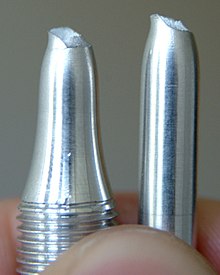Definition and Importance of Ductility
– Ductility is a mechanical property that describes a material’s ability to sustain plastic deformation under tensile stress before failure.
– It is important in engineering and manufacturing as it determines a material’s suitability for certain manufacturing operations and its ability to absorb mechanical overload.
– Ductility allows materials to be manipulated using metal-forming processes such as hammering, rolling, drawing, or extruding.
– Ductile materials can undergo large plastic deformation before failure.
– Ductility is measured by the percentage of elongation or reduction in cross-sectional area during a tensile test.
– Ductile materials have a high strain energy absorption capacity.
Factors Affecting Ductility
– Crystal structure: Materials with a body-centered cubic (BCC) or face-centered cubic (FCC) crystal structure tend to have higher ductility.
– Temperature: Ductility generally decreases with decreasing temperature, especially below the ductile-brittle transition temperature.
– Grain size: Fine-grained materials exhibit higher ductility compared to coarse-grained materials.
– Impurities and alloying elements: The presence of impurities and certain alloying elements can decrease ductility.
– Strain rate: Ductility can be affected by the rate at which the material is deformed, with higher strain rates often resulting in reduced ductility.
Ductile Fracture and Failure
– Ductile fracture occurs when a material undergoes significant plastic deformation before failure.
– Ductile fracture is characterized by the formation of necking and the presence of microvoids.
– Ductile failure is generally preceded by the nucleation, growth, and coalescence of voids.
– Ductile failure is associated with the absorption of significant energy and deformation localization.
– Ductile materials exhibit a gradual and progressive failure process, providing warning signs before complete failure.
Applications of Ductile Materials
– Ductile materials are widely used in industries such as construction, automotive, aerospace, and manufacturing.
– Ductile metals like steel and aluminum are commonly used for structural components and machinery.
– Ductile polymers are used in various applications, including packaging, pipes, and electrical insulation.
– Ductile ceramics find applications in cutting tools, biomedical implants, and armor.
– Ductile materials are essential for processes such as metal forming, welding, and machining.
Enhancing Ductility
– Heat treatment processes like annealing and tempering can improve the ductility of certain materials.
– Alloying elements can be added to enhance the ductility of metals and alloys.
– Grain refinement techniques, such as severe plastic deformation, can increase the ductility of materials.
– Controlling the processing conditions, such as strain rate and temperature, can influence the ductility of materials.
– Understanding the microstructure-property relationship is crucial for designing materials with improved ductility. Source: https://en.wikipedia.org/wiki/Ductility
This article needs additional citations for verification. (October 2008) |
Ductility is a mechanical property commonly described as a material's amenability to drawing (e.g. into wire). In materials science, ductility is defined by the degree to which a material can sustain plastic deformation under tensile stress before failure. Ductility is an important consideration in engineering and manufacturing. It defines a material's suitability for certain manufacturing operations (such as cold working) and its capacity to absorb mechanical overload. Some metals that are generally described as ductile include gold and copper, while platinum is the most ductile of all metals in pure form. However, not all metals experience ductile failure as some can be characterized with brittle failure like cast iron. Polymers generally can be viewed as ductile materials as they typically allow for plastic deformation.


Malleability, a similar mechanical property, is characterized by a material's ability to deform plastically without failure under compressive stress. Historically, materials were considered malleable if they were amenable to forming by hammering or rolling. Lead is an example of a material which is relatively malleable but not ductile.
